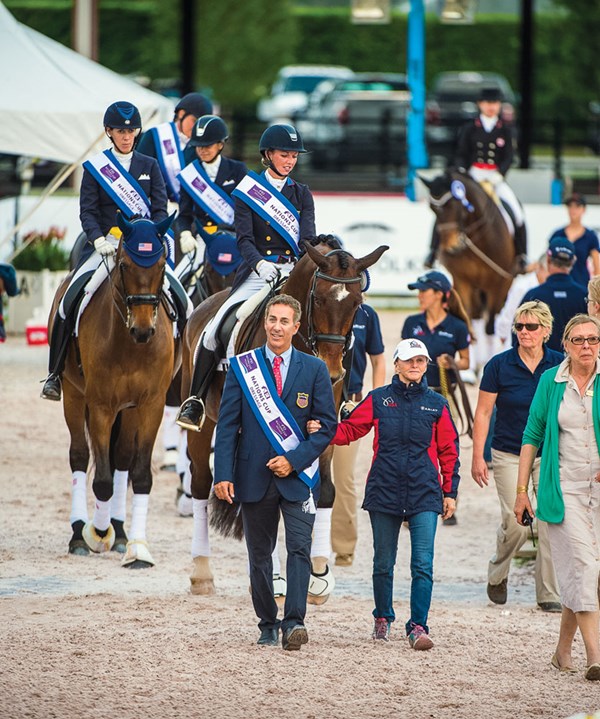
Owners of world-class horses often find it difficult to find words to adequately express the emotion of watching their own horse coming down the centerline at a major competition like Aachen or the Olympic Games. But the Dressage Owners Task Force (DOTF) has set out to explain the benefits of ownership—individual and syndicate—in an attempt to enlarge the world of horse ownership and support the evolving needs of current and potential high-performance dressage-horse owners.
With the cost of high-performance horses rising, syndication can be a way to make high-quality horses more attainable. “Look at the PSI Auction [in Germany], where a 6-year-old was sold for over $3 million dollars,” says U.S. dressage chef d’equipe Robert Dover. “What that does is keep a trend going where it’s harder and harder to find and purchase horses of quality. So rather than having to have dressage become a sport where only multi-millionaires can take part, what we’re hoping is that if you put more players together who can afford less, when they do come together they are able to put a sum together and have a lot of fun watching their horse go to the Games or what have you.”
Chairman of the DOTF Bruce Hlavacek, who with his wife, Jen, owns Weltino’s Magic—the horse ridden by U.S. Olympian Steffen Peters who won team and individual gold at the 2011 Pan American Games and swept the small tour at the World Equestrian Festival in Aachen, Germany—attempted to describe the appeal of owning a world-class horse:
“There’s nothing quantifiable in owning a high-performance horse,” he says. “There’s no money to be made, so you have to enjoy the journey. It’s hard to explain sitting in a place like Aachen, in a stadium dedicated to dressage, jam-packed with people who all understand the sport. To have your horse come down centerline and have 10,000 people understand every move the horse is making is very exciting. We personally had a horse who was successful at the Pan Am Games in Guadalajara, and to have your horse win a medal is an experience that’s hard to match. But it’s more than seeing your rider stand on the podium: Trying to qualify and make the team is the thrill of the journey.”
What Is the DOTF?
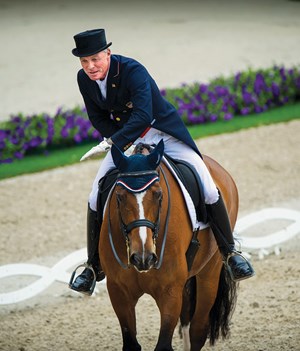
A year and a half ago, a group of leaders in the world of high-performance dressage, including Hlavacek, organized the DOTF to strengthen U.S. dressage nationally and internationally. DOTF committee member Elizabeth Meyer is one of the owners of Rafalca—Ann Romney and Amy Ebeling are the other two. Together, “The Three Amigos,” as rider Jan Ebeling nicknamed them, own the mare that he rode at the 2012 Olympic Games and the 2009, 2011 and 2012 World Cup Finals. The small syndicate also recently bought top German prospect Rassolini for Ebeling to develop as a future American-team hopeful.
Meyer, who is on the DOTF organizing committee, explains, “Our goal is to help U.S. dressage teams get on the podium, not just participate in FEI competitions. I feel that unless all key organizations work on the basics of getting quality horses and world-class training for our riders and horses, we will fall short. Robert is [like] Superman, but he can’t do it alone.”
The mission of the DOTF is to work with the USEF in implementing a system “to ensure that the USA’s elite riders are mounted on the finest horses in the world.” Through the website ExperienceDressage.com, the committee has put in place a workable mechanism to match elite, emerging and potential stars in need of mounts with owners who would like to buy horses for them individually or with other like-minded individuals as a syndicate.
Not only does the DOTF offer social functions for owners and riders at shows, including VIP seating and entertainment, but they help streamline the process for attending shows. “The USEF is keenly aware of the struggle owners have had in finding guidelines for high-performance selection trials, recent ranking lists and the basic logistics of going to shows, such as where to buy tickets, where to stay and how to get barn passes,” explains Meyer. “Working with the DOTF this past year, the dressage department at USEF has increased the information and direct communication with owners and the task force, and I am thrilled at how much easier it is to get practical information.”
The DOTF is also sponsoring receptions at major shows on both coasts to help owners meet one another and encourage others to join the group. “We now have the beginnings of a network of support,” says Meyer. “The bottom line is that being an owner is rewarding and fun, even with its ups and downs. In capital letters, we are talking about HORSES. Even if they wanted to share our goals, it is not always possible for them to do so. There are days when we grind our teeth in unison. But who would not want to be part of the journey, chasing the dream?”
Using ExperienceDressage.com
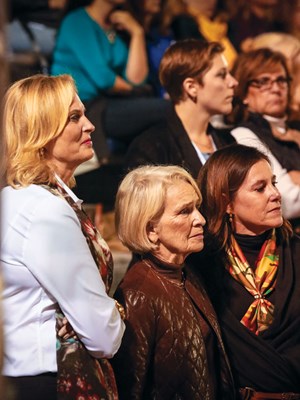
When the committee formed the DOTF, Meyer says she studied the efforts Mark Hart, chair of the Eventing Owners Task Force, and his committee made in encouraging horse ownership through individual purchases and syndication on the website ExperienceEventing.com. The DOTF website was created to achieve the same goals for dressage. “There are more than 50 successful syndications for eventing horses, including syndicated horses at the London Olympics and WEG,” she says. “I am encouraged that the DOTF is on the right track, following eventing’s lead in the ‘match system,’ in which prospective horses are matched with suitable potential owners.”
To see some eventing syndications in action, Meyer visited the 2014 Millbrook Horse Trials in Millbrook, New York, and was overwhelmed watching the support Boyd Martin’s syndicate members gave to him. “It was a puzzle figuring out who owned each of his horses!” she laughs. “I came away determined to help bring the same team spirit to dressage with individual and syndication owners happily cheering and supporting all our riders.”
Martin’s wife, Silva, also successfully syndicated her homebred dressage mare, Rosa Cha W, as a young horse. Rosa Cha W and Silva first represented the U.S. at the 2014 Nations Cup in Wellington, Florida, where they helped earn a team gold medal (read “Building Partnerships,” Dressage Today October 2014).
It is the hope of its creators that ExperienceDressage.com will become the go-to website for dressage owners and prospective owners to easily obtain information. “We’ve got the CDI schedule posted, upcoming shows and information as well as previous shows and results,” notes Hlavacek. “The FEI rankings are there, so it’s easy to keep track of how your horse is doing. To me, that’s one of the ways to build excitement: to establish your goals and what you have to do to get there. This year you can get information about the Pan Am Games and find out everything you need to know.”
Any owner, whether an individual or a member of a syndicate, needs to have a solid relationship with his or her trainer/rider. The website offers advice for owners so that they can come to an agreement and avoid future misunderstandings. There’s even contact information on the website for an attorney who can help draw up a syndicate.
Matchmaking
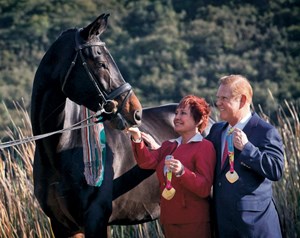
Besides giving owners tools, the website offers ownership matches: Elite, emerging and potential riders are able to list horses. Educating riders on how to best present themselves and horses to prospective owners is another goal.
“This is probably going to be our next focus of refinement—giving riders an opportunity to present themselves,” says Hlavacek. “When you post a request on the website, you should make it clear who you are, why you are listing yourself and what you are trying to accomplish. Ask yourself how you are going to get potential owners excited about going on the journey with you.”
USEF Director of Dressage Jenny Van Wieren-Page reminds riders that as in any business transaction, communication is key in a successful rider/owner relationship. “Communication starts from day one in the relationship,” she says. “What are the goals and expectations from each party? This type of discussion will guide the partnership.”
According to Hlavacek, there are currently 34 riders who qualify as elite under the DOTF definition, but not all of them need help right now. “Some of them already have horses and owners. It’s those who aren’t taken care of that the DOTF wants to highlight because the U.S. has some good riders out there who need a competitive horse to be successful. We also have 63 emerging riders who could be trying to syndicate a horse that’s just starting its career or they could be trying to purchase a high-performance horse worth millions of dollars. There’s one emerging rider who, through this process, has acquired a horse and is going to be evaluated this spring for the Under-25 Grand Prix. She actually moved from the West Coast to the East Coast to take advantage of the situation.”
Syndication: What Makes a Successful Partnership?
Based on her experience in several successful horse-ownership partnerships, Meyer says, “Potential owners and riders must discuss all aspects of a future partnership. To help with the discussion, the DOTF has included sections like Best Practices and Syndication ABCs on our website. If the goals and expectations of all parties are in agreement then they should move to the next step of having a legal contract drawn up and signed. Some of the discussions may be difficult, but no one likes surprises along the way.”
While the Three Amigos is a small partnership, some existing syndicates consist of larger groups of people. “Being in a syndicate with lots of partners can be thrilling,” says Meyer. “My eventing friends who are in multi-person syndicates really love being together at events, planning dinners and outings beyond sitting at ringside.”
Dover has firsthand experience with syndication: “Going back to the Olympics, my horse Romantico was in a limited partnership of maybe 16 people who got together to buy him for me. It’s not a new idea at all and it’s done in all sorts of sports, obviously. It’s a great idea that’s just now being made more possible by the efforts of the DOTF.”
Different people have different goals: a 6-year-old horse’s success at the Young Horse Dressage Finals, celebrated with a group of syndicate members, may be just as satisfying to one person as watching a horse compete in a major international championship is for another horse owner. You don’t have to get involved in high performance to enjoy the journey.
Syndication can also make horse ownership accessible to people on a budget. If you’re talking about a $25,000 horse, and you are able to organize a syndicate with 10 fractional shares, that allows individuals to get involved for an initial investment of $2,500 per person. Annual maintenance fees typically cost a few thousand dollars per person, depending on the situation.
Not every owner is motivated by winning medals. Many find gratification in seeing a young horse develop through the levels and enjoy supporting a rider who they have a personal connection with, whether or not he or she achieves competitive success. There is also the possibility of selling a horse at a profit, but it must be understood by everyone that horses are never a sure financial bet and there’s a certain amount of financial and emotional risk any time you own a horse.
Evolution
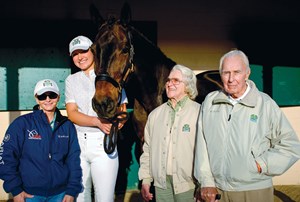
Dover says that he hopes the DOTF will evolve to sprout a national dressage owners’ club. “The DOTF comes under the umbrella of the USEF and because of that, it’s restricted in what it can or cannot do in order to maintain the kind of fairness that is paramount when you’re dealing with a federation,” he explains. “A club, which is autonomous, can raise money, bank that money and if it hears about a horse on the market can buy it and then use professionals as consultants.”
Dover says he receives requests nearly every day to write a reference
for a particular rider in search of someone to invest in a horse. But as chef d’equipe it would be a conflict of interest for him to recommend any particular individual. “I can’t write a reference for one rider and appear to be prejudiced for that rider over another one,” he explains.
Dover adds, “I want to profusely thank all the members of the DOTF, who are all major owners and who’ve shown such great commitment and passion for putting America on top of the highest podium.” He says that having an organized group of owners will be a game-changer for dressage in the United States because it makes it easier to locate and purchase top horses. “Other countries are moving right along, and over here it’s harder because you’re not at every show where a great medium-level horse comes along,” he says. “If we don’t have the means of the DOTF or an ancillary club, by the time those horses go on the market, they’re already sold. The members of the DOTF understand the reality of how high the bar is.”
Building Your Profile
Here are some things to consider/include when building a profile on ExperienceDressage.com:
• Where are you located?
• What are your qualifications?
• Who is your coach/trainer?
• Who are your current high-performance horses (if any)? Include age, CDI level to show, long-term competition plan and how long you’ve had the horse.
• Who are your other current horses with high-performance potential (if any)?
• If you are searching for a horse, include the identity of a prospective horse, if you have one in your sights. Include training and competition plans as well as goals and checkpoints.
• In developing a syndicate, describe the proposed ownership structure: total number of shares; how many shares will be owned by the rider, if any; the approximate buy-in cost per share; approximate annual maintenance expenses and how many shares are currently available.











